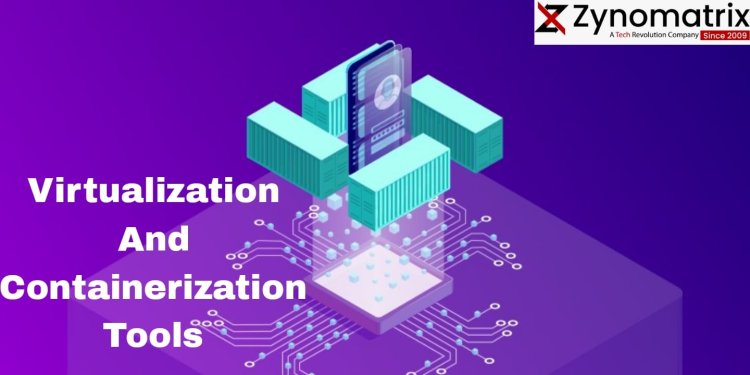Virtualization and Containerization Tools: Revolutionizing Modern Software Deployment
Virtualization and containerization tools have revolutionized modern software deployment by providing efficient, scalable, and portable solutions for managing applications and their dependencies. These technologies have transformed the way software is developed, deployed, and managed, enabling organizations to achieve greater agility and flexibility in the rapidly evolving digital landscape.

Introduction:
In today's fast-paced technological landscape, the ability to efficiently deploy and manage software applications is critical for businesses and developers alike. Virtualization and containerization have emerged as game-changing solutions, enabling organizations to streamline operations, enhance scalability, and promote seamless collaboration among teams. This blog explores the concepts of virtualization and containerization, delving into the popular tools that have revolutionized modern software development and deployment.
Understanding Virtualization and Containerization
Virtualization is the process of creating a virtual version of something, such as an operating system, a server, a storage device, or a network resource. It allows multiple virtual machines (VMs) to run on a single physical server or host, each of which operates independently and runs its own guest operating system.
Deep Dive into Containerization
Containerization is a powerful technology that has revolutionized the way applications are developed, deployed, and managed. It enables developers to package their applications and all their dependencies into a single unit, known as a container, providing a consistent and reproducible runtime environment. Here's a deep dive into containerization, covering its key components, benefits, container runtimes, and popular containerization platforms like Docker and Kubernetes
Benefits of Containerization over Traditional Virtualization
Containerization offers several advantages over traditional virtualization, especially when it comes to modern software development and deployment. Here are some key benefits of containerization over traditional virtualization. Containers share the host OS kernel, which makes them more lightweight and efficient compared to virtual machines (VMs) that require a separate guest OS for each instance. As a result, containers consume fewer resources (CPU, memory, and storage), allowing for higher density on a single host. Containers can be launched almost instantly, typically within seconds, compared to virtual machines that can take minutes to start up. This quick startup time streamlines the deployment process and allows for more agile development and scaling.
Introduction to Docker
Docker is an open-source containerization platform that allows developers to build, ship, and run applications in containers. It provides a lightweight, portable, and efficient way to package an application along with its dependencies, libraries, and configurations into a single unit called a container. Docker has gained widespread popularity due to its ability to simplify application deployment, scalability, and management, making it a key technology in modern software development and deployment practices.
Diving into Kubernetes
Kubernetes, often abbreviated as K8s, is an open-source container orchestration platform developed by Google. It is designed to automate the deployment, scaling, and management of containerized applications in a cluster of host machines. Kubernetes has become the de facto standard for managing containerized workloads in cloud-native environments due to its powerful features and extensive ecosystem.
Use Cases and Success Stories
Kubernetes is an open-source container orchestration platform developed by Google. It provides a powerful framework for automating the deployment, scaling, and management of containerized applications in a cluster of host machines. Kubernetes simplifies the management of complex distributed systems and enables organizations to build scalable, resilient, and portable applications.
Securing Virtualized and Containerized Environments
Securing virtualized and containerized environments is crucial to prevent unauthorized access, data breaches, and potential disruptions. Both virtualization and containerization introduce unique security considerations that organizations must address. Here are some essential security best practices for securing virtualized and containerized environments
Integration with Cloud Services
Both virtualized and containerized environments can be seamlessly integrated with various cloud services to enhance their capabilities, scalability, and management. Integration with cloud services provides organizations with a flexible and cost-effective approach to deploy and manage applications. Here are some ways virtualized and containerized environments can integrate with cloud services
The Future of Virtualization and Containerization
The lines between traditional virtualization and containerization are gradually blurring, with some solutions combining the benefits of both technologies. For instance, projects like Kata Containers and gVisor aim to enhance container security by using lightweight virtual machines for better isolation. Both virtualization and containerization will continue to focus on resource efficiency. Efforts to reduce resource overhead and optimize performance will persist to ensure better utilization of hardware resources and reduced operational costs.
What's Your Reaction?





















